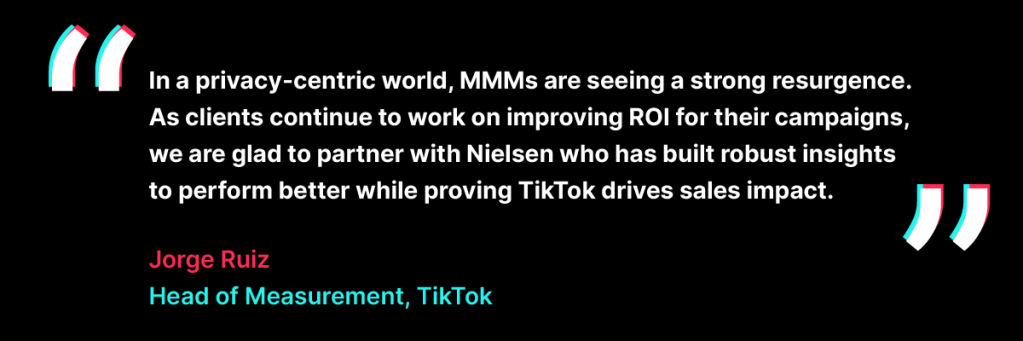The popular video-sharing platform TikTok has exploded onto the scene in the last few years. Now available in over 155 countries, the platform has seen tremendous growth within the Middle East region for engaging entertainment and inspirational content.
In this case study, TikTok commissioned a syndicated Market Mix Model (MMM) study with Nielsen to investigate what impact its full-funnel immersive ad solutions have on driving sales and ROAS across the CPG category. Using Nielsen’s Marketing Mix Modeling solution, TikTok uncovered data-driven insights on how brands can maximize ROAS. Here is what Jorge Ruiz, TikTok’s Head of Measurement had to say:

+10%
Additional ROAS by running > 1 ad formats
$1.83
TikTok Total ROAS
Retail Sales Revenue Per Dollar Spent
+16%
Higher ROAS when running in-feed ads for higher no. of weeks on air
Methodology: The syndicated MMM solution methodology utilizes “Ad Intel” data sourced via a third party supplier to provide estimate spends for the other publishers to be used within the model. Ad-Intel captures the data through: own registration, media declaration and crawler technology. The model leverages multivariate regression, aligning the media and other drivers to define how sales change based on fluctuations of each driver. A ‘lift factor’ is mathematically ascribed to each of these drivers (aka coefficients or elasticities) and define how much sales change as a result of each individual driver. Nielsen measured the ROAS & Effectiveness of TikTok Ad spend at a granular level.



